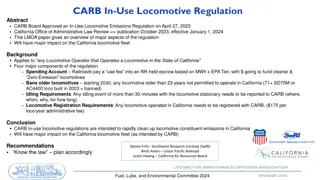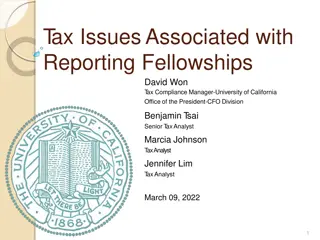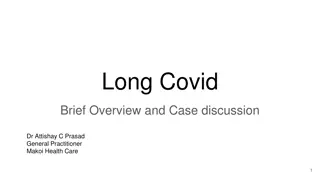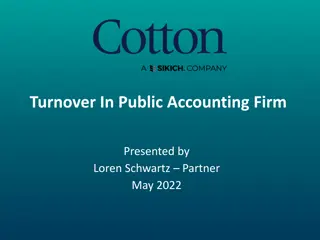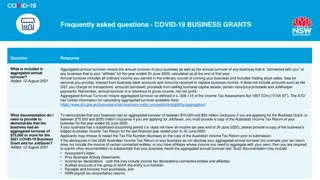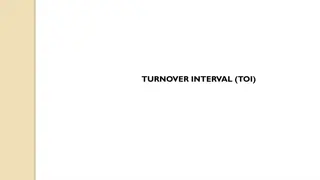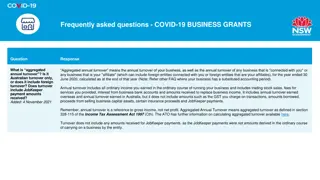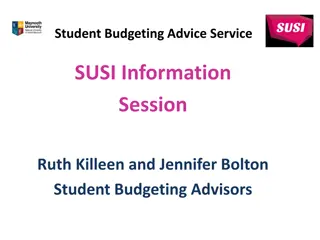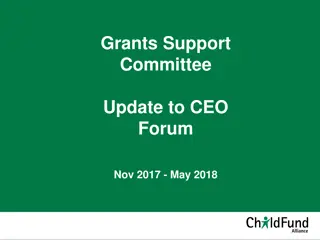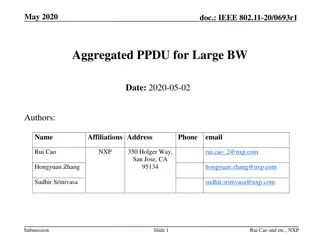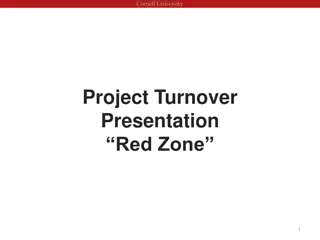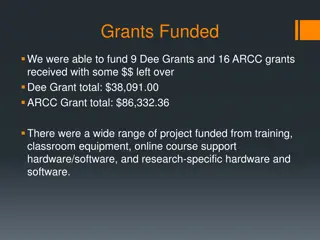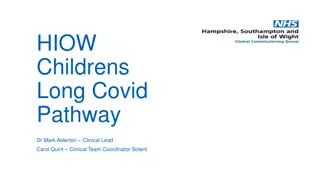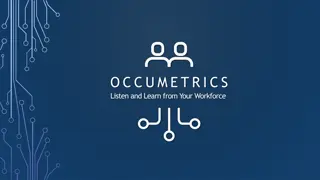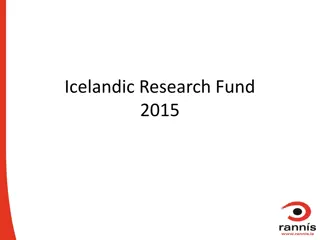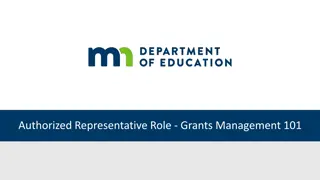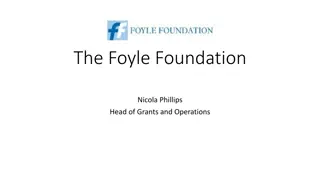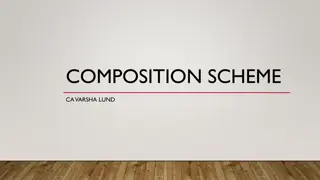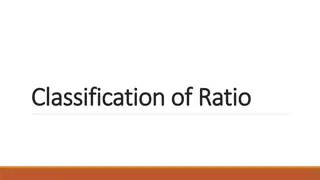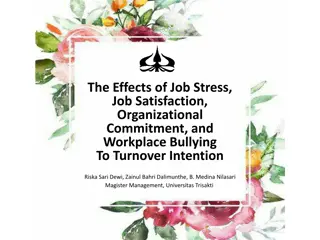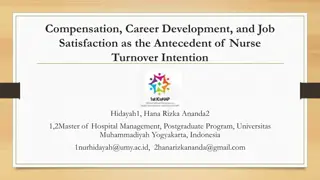Understanding Aggregated Annual Turnover for COVID-19 Business Grants
Aggregated annual turnover for business grants includes not only your business's annual turnover but also that of connected entities and affiliates. It encompasses various income sources but excludes certain amounts like GST, borrowed funds, and insurance proceeds. To demonstrate eligibility, applicants must provide specific documentation related to their aggregated annual turnover, as outlined by the ATO. This criterion is distinct from the turnover decline test imposed for the grants.
Download Presentation

Please find below an Image/Link to download the presentation.
The content on the website is provided AS IS for your information and personal use only. It may not be sold, licensed, or shared on other websites without obtaining consent from the author. Download presentation by click this link. If you encounter any issues during the download, it is possible that the publisher has removed the file from their server.
E N D
Presentation Transcript
Frequently asked questions - COVID-19 BUSINESS GRANTS Question Response What is included in aggregated annual turnover? Added: 12 August 2021 Aggregated annual turnover means the annual turnover of your business as well as the annual turnover of any business that is "connected with you" or any business that is your "affiliate" for the year ended 30 June 2020, calculated as at the end of that year. Annual turnover includes all ordinary income you earned in the ordinary course of running your business and includes trading stock sales, fees for services you provide, interest from business bank accounts and amounts received to replace business income. It does not include amounts such as the GST you charge on transactions, amounts borrowed, proceeds from selling business capital assets, certain insurance proceeds and JobKeeper payments. Remember, annual turnover is a reference to gross income, not net profit. Aggregated Annual Turnover means aggregated turnover as defined in s. 328-115 of the Income Tax Assessment Act 1997 (Cth) ( ITAA 97 ). The ATO has further information on calculating aggregated turnover available here: https://www.ato.gov.au/business/small-business-entity-concessions/eligibility/aggregation/ To demonstrate that your business had an aggregated turnover of between $75,000 and $50 million (inclusive) if you are applying for the Business Grant, or between $75,000 and $250 million (inclusive) if you are applying for JobSaver, you must provide a copy of the Australian Income Tax Return of your business for the year ended 30 June 2020. If your business has a substituted accounting period (i.e. does not have an income tax year end of 30 June 2020), please provide a copy of the business s lodged Australian Income Tax Return for the last financial year ended prior to 30 June 2020. Applicants may choose to redact the Tax File Number disclosed on the copy of the Australian Income Tax Return prior to submission. If the disclosures in the 2020 Australian Income Tax Return of your business do not disclose your aggregated annual turnover (for example your tax return does not include the income of certain connected entities, or you have affiliates whose income you need to aggregate with your own), then you are required to submit other documentation to substantiate that your business meets the aggregated annual turnover test. Such documentation may include: Accountant s letter; Prior Business Activity Statements; Income tax declarations - note this may include income tax declarations connected entities and affiliates; Audited accounts of the group of which the entity is a member; Receipts and invoices from purchases; and NSW payroll tax reconciliation returns. What documentation do I need to provide to demonstrate that the business had an aggregated turnover of $75,000 or more for the 2021 COVID-19 Business Grant and for JobSaver? Added: 12 August 2021
Frequently asked questions - COVID-19 BUSINESS GRANTS Question Response Is aggregated annual turnover the only method of determining turnover? Added: 12 August 2021 The definition of 'Aggregated Annual Turnover' is only used to determine the size of your business as per the turnover threshold requirements. [Refer to FAQ 1 for an explanation of aggregated annual turnover] The requirement regarding aggregated annual turnover is separate to the decline in turnover test. Once you have determined whether your business has aggregated annual turnover of at least $75,000 and no more than $50 million (for the Business Grant) or at least $75,000 and no more than $250 million (for JobSaver), you need to then determine if your business had a decline in turnover of 30% or more during the relevant test periods. Decline in turnover will be measured based on the current Goods and Services Tax ("GST") turnover of your business. Current GST turnover has the meaning given by the Income Tax Assessment Act 1997 (Cth) and the A New Tax System (Goods and Services Tax) Act 1999 (Cth) ("GST Act"). Modifications In calculating current GST turnover, an applicant would need to make the following adjustments: Section 188-15 of the GST Act applies as if a reference to a month was a reference to the fortnight; Subsection 188-15(1) of the GST Act is to be applied at the end of the fortnight; Subsection 188-15(1) of the GST Act has effect as if the reference in that subsection to , or are likely to make, during the 12 months ending at the end of that month, was instead a reference to during that fortnight ; Subsection 188-15(2) of the GST Act (about members of GST groups) is to be disregarded; Each external Territory is treated as forming part of the indirect tax zone (within the meaning of the GST Act). The above-mentioned modifications to the GST Act have the effect to: Enable applicants to calculate GST Turnover for a period of a fortnight; If an applicant is part of a GST group, the applicant will calculate its GST turnover as if it was not part of the GST group. This means that supplies made by one group member to another will be included in GST turnover for the purposes of the decline in turnover test.
Frequently asked questions - COVID-19 BUSINESS GRANTS Question Response Decline in turnover will be measured based on the Goods and Services Tax ("GST") turnover of your business. As such, if you report GST turnover on your BAS to the ATO on an accrual basis, you should use this method. If you report GST turnover on your BAS to the ATO on a cash basis, you should use this method. To meet the decline in Turnover Test for JobSaver you need to show a decline in turnover over a minimum 2-week consecutive period from 26 June 2021 to 28 August 2021, compared to: the same period in 2019, or the same period in 2020, or the 2-week period immediately before the Greater Sydney lockdown commenced (12 June to 25 June 2021). For any business that reports GST on a cash basis, you may not see a decline in turnover until later during the Greater Sydney lockdown period. Once you have demonstrated your eligibility, however, your JobSaver payments will be backdated to 18 July 2021. Should the decline in turnover be calculated on a cash or accrual basis for JobSaver applicants? Added: 12 August 2021 Decline in turnover will be measured based on the Goods and Services Tax ("GST") turnover of your business. As such, if you report GST turnover on your BAS to the ATO on an accrual basis, you should use this method. If you report GST turnover on your BAS to the ATO on a cash basis, you should use this method. To meet the decline in turnover test for the Business Grant, you need to have experienced a decline in turnover of 30% or more due to the Public Health Order over a minimum 2-week consecutive period from 26 June 2021 to 17 July 2021 compared to: the same period in 2019, or the same period in 2020, or the 2-week period immediately before the Greater Sydney lockdown commenced (12 June to 25 June 2021). This Business Grant covers the first three weeks of the Greater Sydney lockdown. For any business that reports GST on a cash basis, you may not see a decline in turnover until later during the lockdown period. You may, however, be eligible for JobSaver, which covers from 18 July 2021 until the end of the lockdown. Should the decline in turnover be calculated on a cash or accrual basis for the Business Grant? Added: 12 August 2021
Frequently asked questions - COVID-19 BUSINESS GRANTS Question Response To meet the Decline in Turnover Test for the Micro-business Grant, you need to have experienced a decline in turnover of 30% or more due to the Public Health Order over a minimum 2-week consecutive period from 26 June 2021 to 28 August 2021 compared to: the same period in 2019, or the same period in 2020, or the 2-week period immediately before the Greater Sydney lockdown commenced (12 June to 25 June 2021) For any business that reports GST on a cash basis, you may not see a decline in turnover until later during the Greater Sydney lockdown period. Once you have demonstrated your eligibility, however, your Micro-business Grant payments will be backdated to 26 June 2021. Should the decline in turnover be calculated on a cash or accrual basis for the Micro- business Grant? Added: 12 August 2021 A letter from a Practitioner (which can include a qualified accountant, a registered tax agent or a registered BAS agent) confirming the decline in turnover must be lodged if: Your business is not on the 'highly impacted industries list'. Your business is on the highly impacted industries list and you are applying for a weekly JobSaver payment of more than $10,000. If a business has previously submitted a letter from a Practitioner to Service NSW to verify decline in turnover for other COVID-19 business support grants, they can resubmit this letter as evidence of a decline in turnover up to the percentage previously attested. Non-employing accounting businesses must submit a letter from a Practitioner that is independent from the business. Refer to Attachment A: List of highly impacted industries of the COVID-19 Business Grant Guidelines https://www.service.nsw.gov.au/jobsaver-payment-guidelines#attachment-a-list-of-highly-impacted-industries Is an accountant's letter always required to show decline in turnover for JobSaver? Added: 12 August 2021
Frequently asked questions - COVID-19 BUSINESS GRANTS Question Response A letter from a Practitioner (which can include a qualified accountant, a registered tax agent or a registered BAS agent) confirming the decline in turnover must be lodged if: Your business is not on the 'highly impacted industries list . If a business has previously submitted a letter from Practitioner to Service NSW to verify decline in turnover for other COVID-19 business support grants, they can resubmit this letter as evidence of a decline in turnover up to the percentage previously attested. Non-employing accounting businesses (e.g. sole traders) must submit a letter from a Practitioner that is independent from the business. Refer to Attachment A: List of highly impacted industries of the COVID-19 Business Grant Guidelines https://www.service.nsw.gov.au/2021-covid-19-business-grant-guidelines#attachment-a-list-of-highly-impacted-industries Is an accountant's letter always required to show decline in turnover for the 2021 COVID-19 Business Grant? Added: 12 August 2021 A letter from a Practitioner (which can include a qualified accountant, a registered tax agent or a registered BAS agent) confirming the decline in turnover may be lodged to support your application for the Micro-business grant if: Your business is not on the 'highly impacted industries list'. A letter from a Practitioner is one form of documentation that can be used to support your application. Refer to Attachment B: List of highly impacted industries of the COVID-19 Business Grant Guidelines https://www.service.nsw.gov.au/2021-covid-19-micro-business-grant-guidelines#attachment-b-highly-impacted-industries Service NSW to review Service NSW website and ensure correct link is included in all other guidelines the Highly impacted Industries list is Attachment A however per Service NSW website 12/08/2021 is attachment B. Is an accountant's letter always required to show decline in turnover for the Micro-business Grant? Added: 12 August 2021
Frequently asked questions - COVID-19 BUSINESS GRANTS Question Response The GST definition of current GST turnover will be applied when assessing whether an applicant experienced the required decline in turnover. You will need to apportion your GST turnover reported in your monthly or quarterly Business Activity Statements so that you only include your GST turnover related to a minimum 2 week consecutive period between 26 June 2021 and 17 July 2021 for the Business Grant and 26 June 2021 and 28 August 2021 for the Micro-Business Grant and JobSaver and the corresponding period: The same period in 2019; or The same period in 2020; or the 2-week period immediately before the Greater Sydney lockdown commenced (12 June to 25 June 2021). If an applicant is part of a GST group, the applicant will calculate its GST turnover as if it was not part of the GST group. This means that supplies made by one group member to another will be included in GST turnover for the purposes of the decline in turnover test Alternatively, you may elect to identify the current GST turnover that actually occurred during a minimum two-week period within the specified calculation period, using the same basis on which you prepare your BAS. You should compare this to the current GST turnover that actually occurred in the same minimum two-week period that you have selected as the comparison period. Businesses report on a monthly or quarterly basis, how can the decline in turnover be calculated over a two- week period? Added: 12 August 2021 Yes, a business will be able to use the full three-week period to show the decline in turnover. The guideline eligibility states that a minimum two-week period of decline be shown, can a business use the full three-week period to show the decline? Added: 12 August 2021
Frequently asked questions - COVID-19 BUSINESS GRANTS Question Response An employing accounting firm can provide a letter covering their own business. A sole trader accountant cannot verify their own decline in turnover. They will need to obtain a letter from an Independent Practitioner which can include a qualified accountant, registered tax agent or registered BAS agent. Can an accounting firm provide their own accountant s letter? Added: 12 August 2021 Non-employing businesses are eligible to apply for the grants if all the eligibility requirements are met. However, non-employing businesses are not eligible to apply if persons associated with the business, and who derive income from it, have applied for, or are receiving, the Commonwealth COVID-19 Disaster Payment. Is a business eligible for the grants where they are not paying wages (for example a director drawing down on loans)? Added: 12 August 2021 Businesses can apply for, and receive, both JobSaver and the 2021 COVID-19 Business Grant. JobSaver commences on 18 July 2021, whereas the Grant is designed to support businesses from 26 June 2021 to 17 July 2021. How does JobSaver affect whether a business may be able to receive the 2021 COVID- 19 Business Grant? Added: 12 August 2021
Frequently asked questions - COVID-19 BUSINESS GRANTS Question Response Non-employing businesses (which includes non-employing sole traders) are not eligible to apply if persons associated with the business, and who derive income from it, have applied for, or are receiving, the Commonwealth COVID-19 Disaster Payment. Non-employing business means a business owner who does not have employees. This may include a range of entity types, such as non-employing sole traders or any other businesses without employees. Can a non-employing business receive the Commonwealth COVID- 19 Disaster Payment and the 2021 COVID-19 Business Grant? Added: 12 August 2021 No. For the Business Grant, if during the period 1 June 2021 and 17 July 2021, a recipient incurs eligible expenses less than the grant monies received, they may retain the monies on the condition that they are spent on eligible expenses that arise in the future and retain evidence of the same. For the Micro- business, surplus funds may be retained and spent on future eligible expenses provided evidence is retained of the same. If a Business Grant or Micro-business recipient has grant funds left over (in the case of the Business Grant, after covering all eligible incurred between 1 June 2021 to 17 July 2021, and in the case of the Micro- business grant, after having covered all eligible expenses), are they required to repay the unspent amount? Added: 12 August 2021
Frequently asked questions - COVID-19 BUSINESS GRANTS Question Response The letter from a Practitioner should follow the template provided by Service NSW. Accordingly, the letter should include the following information for JobSaver and the Micro-business Grant: Applicant s business name, Applicant s business address, Applicant s Australian Business Number (ABN); Turnover for a minimum 14-day consecutive period between 26 June and 28 August 2021 inclusive; Turnover for a minimum 14-day consecutive period between either o the same period in 2019; or o the same period in 2020; or o the 2-week period immediately before the Greater Sydney lockdown commenced (11 June to 25 June 2021). Decline in turnover percentage; Details of the Practitioner (including name, position title, contact telephone number, email address, professional registration details and registration number). Accordingly, the letter should include the following information for Business grant: Applicant s business name, Applicant s business address, Applicant s Australian Business Number (ABN); Turnover for a minimum 14-day consecutive period between 26 June and 17 July 2021; Turnover for a minimum 14-day consecutive period between either o the same period in 2019; or o the same period in 2020; or o the 2-week period immediately before the Greater Sydney lockdown commenced (11 June to 25 June 2021). Decline in turnover percentage; Details of the Practitioner (including name, position title, contact telephone number, email address, professional registration details and registration number). Note: the accountants template letter has been updated on the Service NSW website following the expansion of the Grant program to allow additional comparative periods. What should be included in the accountant's letter noting that a template has been provided on the SNSW website? Added: 12 August 2021
Frequently asked questions - COVID-19 BUSINESS GRANTS Question Response The wording in the letter from the Practitioner should be updated to refer to the exact test period being relied upon. It is noted that the decline in turnover test requires testing over a minimum 2-week period between 26 June 2021 and 17 July 2021 for the Business grant and between 26 June 2021 and 28 August 2021 for the Micro-business grant and JobSaver compared to: the same comparative period in 2019 or the same comparative period in 2020; or the 2-week period immediately before the Greater Sydney lockdown commenced (12 June to 25 June 2021). Is the Accountant letter able to be edited for the comparison period dates to match the alternate dates as selected by the customer? Added: 12 August 2021 With respect to the Business Grant, a business will need to have experienced a decline in turnover of 30% or more over a minimum two-week period from 26 June 2021 to 17 July 2021 compared to one of the following comparable periods depending on when the business commenced operations: The same period in 2020; or The two-week period immediately before the lockdown commenced (i.e. 12 June 2021 to 25 June 2021). If a business was not operating for the full year to 30 June 2019 or 30 June 2020, how can it demonstrate the minimum decline in turnover for the Business Grant? Added: 12 August 2021 With respect to JobSaver or the Micro-business Grant, a business will need to have experienced a decline in turnover of 30% or more over a minimum two-week period from 26 June 2021 to 28 August 2021 compared to one of the following comparable periods depending on when the business commenced operations: The same period in 2020; or The two-week period immediately before the lockdown commenced (i.e. 11 June 2021 to 25 June 2021). If a business was not operating for the full year to 30 June 2019 or 30 June 2020, how can it demonstrate the minimum decline in turnover for JobSaver or the Micro-Business Grant? Added: 12 August 2021
Frequently asked questions - COVID-19 BUSINESS GRANTS Question Response The form has now been updated on the website. The current test period for the Business grant is from 26 June 2021 to 17 July 2021. The JobSaver scheme provides support to businesses from 18 July 2021. The accountant template letter for the Business grant refers to turnover for a minimum 14-day consecutive period between 26 June and 26 July 2021 inclusive, however the two-week period has changed to 26 June to 17 July. Added: 20 August 2021 A business or not-for-profit organisation must declare their employee headcount and declare they will maintain their employee headcount. In order to make this declaration a business should have sufficient evidence and records to support this declaration. Records may include, but are not limited to: Payroll reports; Single touch payroll data; or Rosters and timesheets What documentation may be required to show no change in staffing levels to support headcount declarations? Added: 20 August 2021 Yes, the business will still be eligible for JobSaver if all the relevant eligibility criteria has been met. If a staff member is on paid leave, they will be included as part of the Employee Headcount declaration if the staff member was employed in New South Wales and is a permanent (full-or part time) or casual staff member who has been employed for more than 12 months by the business or not-for-profit organisation as at 13 July 2021 If staff are on paid leave is the business eligible for JobSaver? Added: 20 August 2021
Frequently asked questions - COVID-19 BUSINESS GRANTS Question Response No. Employees can still receive Commonwealth COVID-19 Disaster Payments if their employer is receiving JobSaver. However, non-employing businesses are not eligible for the JobSaver payment if individuals associated with and deriving income from the business have received a Commonwealth COVID-19 Disaster Payment since 18 July 2021. If an individual remains in the headcount but has hours reduced or stood down, and the business receives the JobSaver program and / or the Business grant, does that prevent the individual receiving the Disaster payments? Added: 20 August 2021
Frequently asked questions - COVID-19 BUSINESS GRANTS Question Response For JobSaver purposes and the requirement to maintain employee headcount : 1. What happens if staffing levels are adjusted due to an employee resigning or even death? 2. What about redundancies? 3. What about fair terminations on the basis of misconduct? 4. What about increased headcount? Added: 14 September 2021 1. Maintaining headcount where there are employee resignations or deaths An employer will Maintain their employee headcount if the employer does not take active steps to end the employment relationship with their employees. Employees who have been stood down under the Fair Work Act 2009 (Cth) or take leave without pay are considered employees for the purpose of headcount. Businesses will remain eligible if their employee headcount declines for reasons outside the control of the employer, for example if employees voluntarily resign or even in the case of death. Upon successful application, businesses will receive automatic fortnightly payments. Businesses must notify Service NSW if they are not maintaining the number of employees while the business is receiving JobSaver payments. 2. Redundancies Any reduction in headcount due to redundancies will be considered a failure by the employer to Maintain their employee headcount . Compliance activities including reviews or investigations may be conducted where an employer is identified as having reduced headcount. 3. Termination based on misconduct Where an employer fairly terminates an employee for misconduct, the employer will be treated as having maintained their employee headcount. Eligibility will not be impacted on this basis alone. 4. Increased headcount For clarity, an employer will still be considered to Maintain their employee headcount if they increase their headcount by hiring additional employees.
Frequently asked questions - COVID-19 BUSINESS GRANTS Question Response An employer will Maintain their employee headcount if the employer does not take active steps to end the employment relationship with their employees. Employees who have been stood down under the Fair Work Act 2009 (Cth) or take leave without pay are considered employees for the purpose of headcount. For JobSaver purposes, will the business be considered to have maintained its workforce if staff hours are reduced, or employees are stood down during the lockdown? Added: 20 August 2021 No. There is no requirement for staff workload or hours to reduce while a business is receiving JobSaver. Is there a requirement that the workload of staff be reduced to 40% while a business is receiving JobSaver payments? Added: 20 August 2021
Frequently asked questions - COVID-19 BUSINESS GRANTS Question Response Business Grant: If you are applying for the Business Grant, a letter from a qualified accountant, a registered tax agent or a registered BAS agent confirming the decline in turnover of the business must be lodged if your business is not on the 'highly impacted industries list'. If you are applying for the Business Grant and your Business is on the highly impacted industries list , you are not required to submit a letter from a qualified accountant confirming the decline in turnover of your business, but will be required to provide details of your qualified accountant, registered tax agent or registered BAS agent for compliance checking. Is a letter from an accountant required, and in what circumstances and for what grants (now that multiple support payments are triggered by a 30 per cent decline in turnover)? Added: 20 August 2021 JobSaver: If you are applying for JobSaver, a letter from a qualified accountant, a registered tax agent or a registered BAS agent confirming the decline in turnover of the business must be lodged if your business is not on the 'highly impacted industries list' or your business is on the highly impacted list and you are applying for a weekly JobSaver payment of more than $10,000. If you are applying for JobSaver and your Business is on the highly impacted industries list , you are not required to submit a letter from a qualified accountant confirming the decline in turnover of your business, but will be required to provide details of your qualified accountant, registered tax agent or registered BAS agent for compliance checking. Continues on next page.
Frequently asked questions - COVID-19 BUSINESS GRANTS Question Response Continued Continued Is a letter from an accountant required, and in what circumstances and for what grants (now that multiple support payments are triggered by a 30 per cent decline in turnover)? Added: 20 August 2021 Micro-Business Grant: If you are applying for the Micro-business Grant and you are not on the highly impacted industries list , then you are required to submit evidence confirming the decline in turnover of the business. This evidence can be in the form of a: letter from a qualified accountant, registered tax agent or registered BAS agent; or business bank account statement (separate from any personal accounts); or profit and loss statements from an accounting software and an annotated personal bank statement. If you are applying for the Micro-business grant and your Business is on the highly impacted industries list , you are not required to submit a letter from a qualified accountant confirming the decline in turnover of your business. Additionally, all businesses applying for the Micro-Business Grant (regardless of whether they are on the highly impacted industries list or not) must also submit evidence that the business had an aggregated annual turnover of more than $30,000 and less than $75,000 for the year ended 30 June 2020. This can be in a form of a: letter from a qualified accountant, registered tax agent or registered BAS agent; or business activity statements (BAS); or business bank account statement (separate from any personal accounts); or Australian income tax return (from which businesses can choose to redact their tax file number); or A profit and loss statement from an accounting software for a minimum 3-month period for the 2019-20 financial year together with one of the following documents: o an annotated personal bank statement for the same minimum 3-month period; or o a 2019-20 personal income return. Refer to Attachment A: List of highly impacted industries of the COVID-19 Business Grant Guidelines: https://www.service.nsw.gov.au/2021-covid-19- business-grant-guidelines#attachment-a-list-of-highly-impacted-industries
Frequently asked questions - COVID-19 BUSINESS GRANTS Question Response Eligible businesses that are not on the highly impacted industries lists applying for the Micro-Business Grant are required to submit evidence that the business experienced a decline in turnover of 30% or more due to the Public Health Order over a minimum 2-week period within the Greater Sydney lockdown compared to: the same period in 2019; or the same period in 2020; or the 2-week period immediately before the lockdown commenced (12-25 June 2021). This evidence can be in the form of a: letter from a qualified accountant, registered tax agent or registered BAS agent; or business bank account statement (separate from any personal accounts); or profit and loss statements from an accounting software and an annotated personal bank statement. Additionally, all businesses applying for the Micro-Business Grant (regardless of whether they are on the highly impacted industries list or not) must also submit evidence that the business had an aggregated annual turnover of more than $30,000 and less than $75,000 for the year ended 30 June 2020. This can be in a form of a: letter from a qualified accountant, registered tax agent or registered BAS agent; or business activity statement (BAS); or business bank account statement (separate from any personal accounts); or Australian income tax return (from which businesses can choose to redact their tax file number); or A profit and loss statement from an accounting software for a minimum 3-month period for the 2019-20 financial year together with one of the following documents: o an annotated personal bank statement for the same minimum 3-month period; or o a 2019-20 personal income return. What forms of evidence will be accepted for Micro business grant applicant? Added: 20 August 2021
Frequently asked questions - COVID-19 BUSINESS GRANTS Question Response There are several circumstances where a business may not meet the eligibility criteria and supporting evidence requirements but may still be eligible for the Grant. These circumstances include: Businesses not operating for the full year to 30 June 2020 (e.g. new businesses) Businesses affected by drought, bushfires or other natural disasters Business acquisition, disposal or business restructure that has impacted the business turnover A sole trader or small partnership impacted by sickness, injury or leave. Businesses that are applying for either the Business Grant, Micro-business Grant or JobSaver that are unable to demonstrate turnover for a full year, a shorter period can be accepted provided that shorter period is representative of the normal operating environment of the business. The turnover for this shorter period will be annualised to get an equivalent annual turnover figure for the business. Businesses should generally use a minimum 3-month period to demonstrate turnover, and should provide: a Business Activity Statement (BAS) for at least one quarter (or 3-monthly BAS), or an Australian Tax Return annotated to show when the business commenced during the financial year. Where a business does not have the evidence outlined above (for example, because the business started between 1 January and 1 June 2021 or is a micro-business that does not submit a BAS), the following may be provided as evidence of annual turnover: letter from a qualified accountant, registered tax agent or registered BAS agent; or business bank account statement for a minimum 3-month period (separate from any personal accounts), or the period for which the business has been operating if less than 3 months, or (for micro-business grant applicants only) a profit and loss statement from an accounting software for a minimum 3-month period, or the period for which the business has been operating if less than 3 months, and one of the following documents o an annotated personal bank statement for the same period, or o a personal income tax return annotated to show when the business commenced during the financial year. Is aggregated annual turnover the only method of determining turnover where the business is new? Added: 20 August 2021
Frequently asked questions - COVID-19 BUSINESS GRANTS Question Response Please refer to the NSW Performing Arts COVID Support Package Guidelines. https://mk0createnswn7cpj5ax.kinstacdn.com/wp-content/uploads/2021/07/Guidelines_NSW-Performing-Arts-COVID-Support-Package.pdf How will Live music grant amounts be determined and applied for? Added: 20 August 2021 No. Organisations should ensure that their payroll practices are consistent with normal business practice and have not been manipulated for the sole purpose of receiving a higher grant or support amount. Payroll amounts are those reported in W1 of the Business Activity Statement (BAS) of a business. This includes such things as leave loading. Weekly Payroll should generally be determined by referring to the most recent BAS provided to the Australian Taxation Office (ATO) before 26 June 2021 for the 2020-21 financial year adjusted to exclude non-NSW employees and prorated over a 7-day period. An adjustment must also be made to exclude any amounts from W1 that have been withheld on behalf of contractors under voluntary agreements. Businesses that do not submit a BAS or have no W1 amount should use the ATO definition of W1 (adjusted as outlined above) to calculate their Weekly payroll amount. Can businesses use the payment of annual leave in lump sums to capitalise on the JobSaver support? Added: 20 August 2021
Frequently asked questions - COVID-19 BUSINESS GRANTS Question Response No, businesses are not required to pick the two-week period with the lowest turnover for the purposes of the decline in turnover test. The test periods are outlined below depending on whether you are applying for JobSaver, the Business Grant or the Micro-Business Grant. JobSaver and the Micro-Business Grant: To show the required decline in turnover for JobSaver, businesses must choose any minimum two-week period between the 26 June 2021 to 28 August 2021 and compare it to: the same period in 2019; or the same period in 2020; or the two-week period immediately before the lockdown commenced (i.e. 12 June 2021 to 25 June 2021). Business Grant: To show the required decline in turnover for the Business Grant, businesses must choose any minimum two-week period between the 26 June 2021 to 17 July 2021 and compare it to: the same period in 2019; or the same period in 2020; or the two-week period immediately before the lockdown commenced (i.e. 12 June 2021 to 25 June 2021). Businesses can choose any 14-day (minimum) period between 26 June 2021 and 17 July 2021. Businesses and not-for-profit organisations on the NSW border with Victoria impacted by the stay-at-home orders that began on 27 May 2021 may use a different comparison period to demonstrate a decline in turnover. These businesses must demonstrate a decline in turnover over a minimum 14 day period from 27 May 2021 to 17 July 2021. The selected 2021 period must then be compared to the same period (i.e. the same dates) in 2019. For example, if the period selected in 2021 is 17 June to 10 July 2021, this must be compared to the turnover for the period 17 June to 10 July 2019. Are businesses required to use the fortnight with the lowest turnover in the period between 26 June and 17 July 2021 in calculating their decline in turnover when applying for the Business grant? Added: 20 August 2021
Frequently asked questions - COVID-19 BUSINESS GRANTS Question Response Payroll means the Australian Tax Office (ATO) concept of total salary, wages and other payments, as declared at W1 in a Business Activity Statement (BAS) with respect to the payments made for employees that usually worked, or were based, in New South Wales. Weekly Payroll should generally be determined by referring to the calculations underlying the most recent Business Activity Statement (BAS) provided to the Australian Taxation Office (ATO) prior to 26 June 2021 for the 2020-21 financial year. Item W1 in the BAS includes amounts of wages, salaries and other payments that are subject to PAYG withholding tax. Payments subject to withholding tax in W1 includes allowances, leave loading, director fees and termination payments but does not include payments such as superannuation contributions, amount subject to salary sacrifice, interest or dividends. For the purposes of calculating Weekly Payroll, businesses should deduct amounts from W1 that have been withheld on behalf of contractors under voluntary agreements. For businesses that operate in other States and Territories, they should calculate the W1 amount for employees who usually work or were based in New South Wales during the relevant BAS period (i.e. to remove disclosures relating to non-New South Wales employees), as well as then deducting amounts voluntarily withheld on behalf of contractors. Businesses that do not submit a BAS or have no W1 amount should use the ATO definition of W1 to calculate the total wages, salaries and other amounts, excluding amounts withheld on behalf of contractors, for employees who usually worked, or were based, in New South Wales the month of April or May 2021. That amount should be divided by the number of calendar days in the month and multiplied by 7. This will give the Weekly Payroll amount. What is the definition of payroll to be used for JobSaver? Added: 20 August 2021 Employee has the same meaning as its ordinary or common law meaning. Where it is not known whether there is an employee/employer relationship, businesses and not-for-profit (NFP) organisations should consider the guidance provided by the ATO using the Employee/contractor decision tool - Employee/contractor decision tool | Australian Taxation Office (ato.gov.au). What is the definition of an employee for JobSaver purposes? Does it include directors? Added: 20 August 2021
Frequently asked questions - COVID-19 BUSINESS GRANTS Question Response For non-employing businesses, to be eligible the business receiving payments must be the primary income source for the business owner. The requirement is to declare that the business is the primary income source. Individuals with more than one non-employing business may only claim payments for one business. Your primary income source is the source you derive most of your positive cashflows from. Where a non-employing business is applying for the Micro-Business Grant, how will it be determined whether the business is the primary income source for the associated person? Added: 20 August 2021 Your accountant or tax agent can apply on behalf of your business. They will need to provide a letter of authority from you to show that they are authorised to act on behalf of your business if they are not listed as an associate on the Australian Business Register. Advisors/agents may assist their clients with the following: determining their aggregated turnover; determining their decline in turnover; calculating weekly payroll; calculating headcount; collation of required evidence; and if a qualified accountant, registered tax agent or registered BAS agent provision of a letter advising the decline in turnover. The application for the grants or JobSaver is an online process through Service NSW which businesses are to complete. How do advisors/agents assist their clients with respect to the application process for the grants and JobSaver? Added: 20 August 2021
Frequently asked questions - COVID-19 BUSINESS GRANTS Question Response Service NSW provides guidelines on their website for all COVID-19 support grants. The website is updated regularly with guidance on how to apply and clarification of the eligibility criteria. Are factsheets available that provide an indicative timeline to assist small businesses in knowing when they can apply for assistance? Added: 20 August 2021 Service NSW provides guidelines on their website for all COVID-19 support grants. The website is updated regularly with further guidance on how to apply and clarification of the eligibility criteria. In addition to the eligibility criteria, definitions and terms and conditions are provided to assist in the application process. Where uncertainty remains, please contact Service NSW directly. What guidance is available to ensure that business advisors (such as accountants and bookkeepers) are correctly assisting their clients with respect to applications for the COVID-19 support? Added: 20 August 2021 A non-employing business will be considered to be the primary income source of an associated person where more than 50 per cent of the total income of the associated person for the year ended 30 June 2020 comes from that non-employing business. What is meant by primary income source from a non-employing businesses? Added: 7 October 2021


